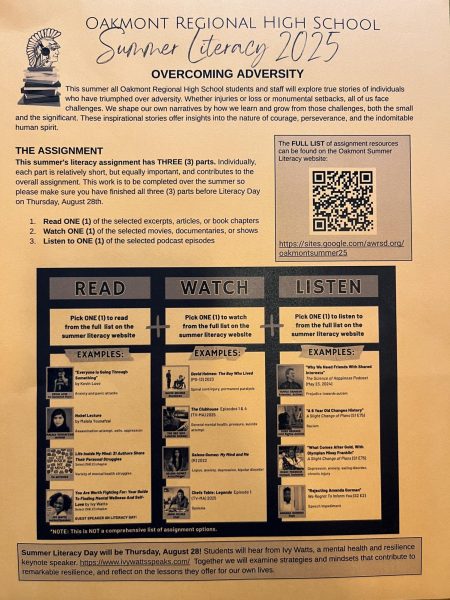The History of Doc Martens
The popular shoe brand, Doc Martens, has become a staple in many people’s closet. The thick and leather-bound platforms have risen in popularity over the last few years. If you look down in the halls of schools, or down the streets of cities, you’ll see a plethora of these shoes on people’s feet. And rather than be hidden in back alleys and obscure parts of cities, Doc Martens stores can be found today in hoity-toity shopping destinations like Boston’s Newbury Street. But before it became popular for everyone to wear them, Doc Martens were popular among lesbians and “radical” punks.
Even now, Doc Martens are something the queer community claims as their own. Queer influencers, content creators, and regular everyday people have popularized the brand. Through the surge of the trending shoes, the history of their emergence has been buried. The climb in their popularity was not intentional. Even dating back to the creation of the shoe, Klaus Maertens’s boots became accidentally famous. Before their influence inside these cultures, the shoes were created for himself, helping with his ankle complications. It’s then when someone discovers how brilliant these boots are, that they begin to sell, and its stylish attire leaks out onto the streets of England. Remembering the history of these boots is an important aspect of lesbianism and queer culture, as well as recognizing their symbolism in punk fashion.
In Eleanor Medhurs’s article, Assertation: Sensible footwear is lesbian camp, she writes, “To claim sensible footwear as lesbian after it has already been appropriated into heterosexual fashion cultures is to consciously use it to carve out a lesbian space. It is to know lesbian history, and long to know a lesbian future.”
The Gay Liberation Movement, a march that happened in 1969, the same year as the Stonewall Riots, pushed lesbians and gay men to battle societal shame and counteract by engaging in radical direct action. The movement allowed a new wave of attention, bringing forth an increase of people coming out, coming together, and countering internalized homophobia.
Before the movement, defying heteronormativity was urged through certain clothes and how you wear something. Gay men wore a bandana in their back pockets and lesbians wore Doc Martens. These things were so discrete yet bold and identifiable. These “codes” shaped the movement altogether. Why hide behind a shoe when you can march in them?
In Eleanor Medhurs’s article, Assertation: sensible footwear is lesbian camp, she says the following, “Two decades later, fashions that originated in various corners of the LGBTQ community have been encouraged to run wild through the fashion landscape, being claimed and worn by whoever likes the look of them. Queer fashion consistently walks a few steps ahead of the heterosexual norm, but our clothing history is no longer ours alone. This means that while queer fashions can still be different and innovative, they are not concrete signposts. They must continue to change to remain ours. The lesbian shoe – the Doc Marten, Birkenstock or hiking boot – now exists as lesbian only in the sterotypical narrative, rather than in reality.”
Unequally, punks sought out something entirely different. They reached further out, not just limiting Doc Martens to one specific group. Punks created a way to outwardly express your ideologies, to defy “social norms”. Punks did not limit Doc’s solely for themselves; they encouraged people to wear the shoe with pride. They wanted people to practically yell to the world how they feel. And they did that through one very simple, harmless way: one’s colorful shoelaces.
From the website Encyclopedia.com, an article named Doc Martens wrote, “During the 1960s many young working-class Brits who felt little connection with mainstream society became skinheads. Skinhead was the name given to young people who shaved their heads and dressed in military clothes, black leather, or other threatening kinds of clothing, for a variety of political reasons. Some were racist white supremacists, while others held quite opposite antiracist views”
In a time of political expression, teen angst, and “radicalists’”, Doc Martens was the sole symbol of upheaving unrest amongst young people and adults alike. Skinheads, historically, were the first to create Lace Code. Lace Code is the color of shoelaces one wears on their Doc’s. Certain colors mean different things, good and bad. According to theodysseyonline.com, red and white-colored laces were commonly used amongst Skinheads, meaning nearly the same thing: a racist white supremacist who may be a Nazi.
For punks, they were anti-skinheads. To them, Doc Martens were a form of political and queer expression. A term known as Ladder Lacing ran rapidly through the ‘70s and 80s, going against what the Skinheads created. Ladder Lacing is the way one styles and ties their Doc Martens. To combat the Skinhead ideology, tying your shoes is crucial. When tying your shoes in Ladder Lace style, the meaning behind the color of your laces changes. This can make it difficult to know right off the bat who to avoid and who to embrace.
From Encyclopedia.com, the article Doc Martens wrote, “In the 1970s many gays and lesbians joined the ranks of young people wearing Doc Martens, perhaps feeling the heavy boots gave them the strength to survive the hatred and prejudice directed at them. During the 1980s rebellious youth groups called punks and goths rejected mainstream culture and dressed in outlandish styles, often dyeing their hair and piercing body parts. Punks and goths made Doc Martens their own by painting them and piercing them with safety pins.”
Continuously, the shoe transforms, evolving and emerging in other subcultures that have notoriously been deemed as “social outcasts”. Grunge, punks, and goths alike have fist pumped and made their mark with the simple black boots.
In a movement of liberation and politics, Doc Martens have a long exhilarating history. These shoes have evolved into many different forms. From being just a normal everyday work boot to helping those with foot complications, to taking up political and queer spaces of symbolism. Doc Martens’ legacy reaches many people, continuing to be worn by youth groups such as Gen-Z, and for many generations to come.

Renée Caisse is a part of the Class of 2024 at Oakmont Regional High School. This is her second year being a part of The Oakmonitor. Renée does many...









Max • Dec 25, 2023 at 3:48 am
Was quite impressed upon discovering the article was written by a senior in highschool, great work.